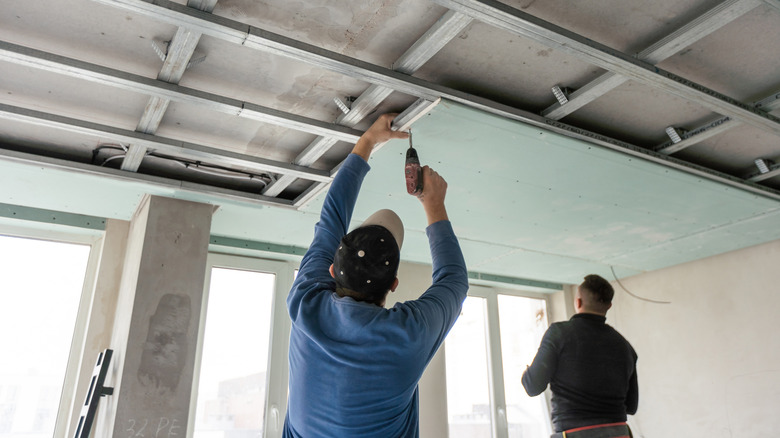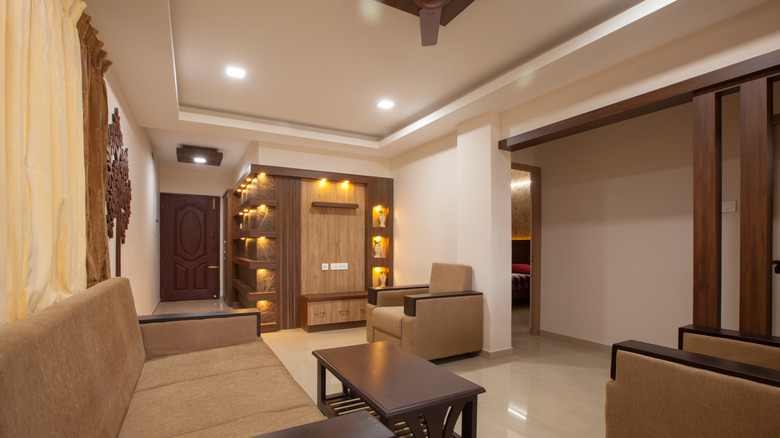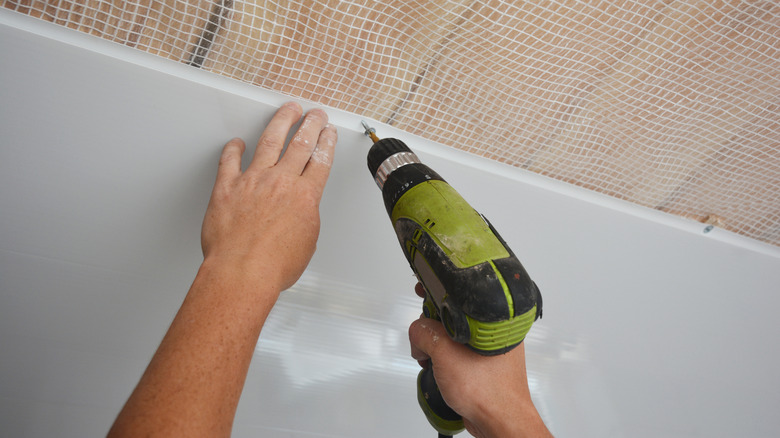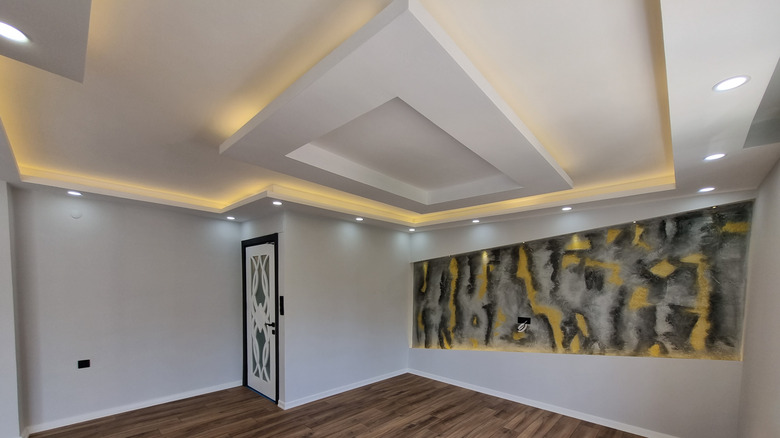False Ceilings: How To Choose The Best Material For Your Needs
Taking the plunge and deciding to install a false ceiling is an awesome choice. It's the upgrade that instantly elevates your space, adds style, and even solves a few practical problems. But now comes the fun part: choosing the right material. It might seem like a simple decision, but with so many options on the table, it's easy to get a little lost.
But first, what is a false ceiling? A false ceiling is a secondary ceiling that hangs below the original one. And while it may sound a little odd at first, trust us — it serves a very practical purpose. False ceilings hide everything you'd rather not see, like pipes, ducts, and wires. But wait, that's not all! They also have other benefits, like improving acoustics and controlling the temperature in a room. Not only can they keep the noise down, but they can also help keep the space cooler in the summer and warmer in the winter. So, while they're hiding the messy stuff up there, they're also working hard to make your space more comfortable and functional.
Now that you've got the basics down, let's talk about choosing the best material for your false ceiling. It's not just about picking the material that looks the best (although that's important too). You also need to think about what the space will be used for, what kind of design you want, and whether you need special features like soundproofing or fire resistance.
Consider the intended use of the space
The first thing you should consider when choosing a material for your false ceiling is the intended use of the space. Will it be a quiet retreat, like a bedroom, or a high-energy space, like a gym or restaurant? For example, in a bedroom or a quiet study room, you'll likely want a material that provides some soundproofing. Gypsum boards are excellent for this — they help dampen noise and offer a polished look. Acoustic tiles, made from mineral fiber or fiberglass, can also be a good option since they absorb sound and reduce noise transmission. These materials are great for controlling reverberation and creating a more peaceful atmosphere.
On the other hand, if you're installing a false ceiling in a high-traffic space like a hallway or office, durability will be your top priority. PVC panels are a great choice here because they are sturdy and easy to maintain. And if you want to add the ceiling to areas where fire safety is a concern, like kitchens or commercial buildings, you'll want to pick fire-resistant materials. Gypsum boards and fire-rated mineral fiber panels are commonly used for this purpose and can help protect your space from fire hazards.
What's your preferred design?
Now, onto the fun part — design. A false ceiling is an opportunity to get creative and make a statement. Materials like metal panels or gypsum boards might be the perfect choice if you're aiming for a clean, modern look. Gypsum, in particular, is highly versatile and can be molded into different shapes, allowing for more creative freedom in your design. Wood panels, on the other hand, might be your best bet for a more rustic or traditional feel. And if you're looking for an elevated look, consider adding this design trend to your ceiling.
When choosing a material for your false ceiling, don't forget to think about texture and color. Smooth finishes, like that of gypsum, give off a more modern, polished vibe, while materials with more texture, like wood panels, can bring a cozy feel to the room. The color of your ceiling is also a big deal. Lighter colors can make a space feel bigger and more open, while darker shades can create a more intimate atmosphere. This ceiling paint color is also making a statement in modern homes.
Design and function need to go hand-in-hand. The material you choose should not only look great but also meet the practical needs of the space. For example, you may love the look of a wooden panel ceiling, but you should reconsider if your room has serious sound issues. Acoustic panels made from mineral fiber or fiberglass are a great way to enhance your space's look and functionality. If you need additional style, use any of these creative ways to add character to your ceiling.
Budget considerations
While we all love to dream big about what our false ceiling could look like, we need to be realistic about what we can afford. Some materials, like gypsum board or PVC, can be quite budget-friendly, while others, like high-end wood panels or metal, can take a bigger bite out of your wallet. If you're working with a tight budget, don't worry! You can still create a stylish ceiling without breaking the bank. Opting for more affordable materials, like mineral fiber tiles or PVC panels, will give you that polished look while keeping costs low. On the other hand, if you've got a little more room to play with, you can go for something fancier, like wooden slats or designer metal panels, for that extra touch of luxury.
Another factor to consider is whether you're planning to install the false ceiling yourself or hire professionals. DIY installation can help save on labor costs, but it might require extra time, tools, and expertise. Materials like PVC can be easier for DIYers to handle, while more complex materials like wood might require the expertise of a professional. If you decide to hire a contractor, consider that cost when budgeting. A professional installation ensures the job is done right but will come at an extra cost. So, whether you're going the DIY route or hiring help, make sure to factor in those additional expenses when setting the budget for your false ceiling project.



